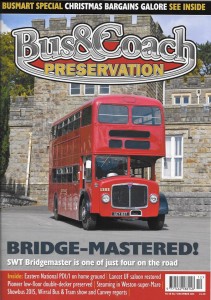http://www.bbc.co.uk/news/in-pictures-34775283
When the 1994 Criminal Justice Act helped bring down the shutters on the free party and rave culture in the UK, many headed to Europe to continue the Summer of Love. One of those was the photographer Tom Hunter, who purchased a double-decker bus and set out to party.
Now that bus, long since abandoned, has been found beside the road in central France.
When Hunter heard the news he was surprised to hear it was still in one piece, having been told it had gone for scrap many years ago.
Hunter had purchased the bus in 1995 along with his friend Sam and together they drove it to a warehouse in east London, near to a large squat they were living in at the time.
The top deck was converted to a sleeping area and downstairs saw the installation of a kitchen, cafe and table football. Throw in some new tyres, exhaust and a new coat of red and white paint and they were ready.
Just one final touch, the addition of the words Le Crowbar added to the side. The name was a reference to the use of a crowbar when entering properties to squat and the “Le” added a French twist. It was hoped that this would also create a friendly vibe around the bus.
Once on the road they toured through Europe for two years, stopping at festivals and free parties led by outfits such as Bedlam Sound System in France, Germany, Portugal and the Czech Republic.
Hunter remembers the bus’s arrival in the latter caused quite a stir with people turning out to take a look. “Everyone came out and invited us back to their homes to eat,” he says.
At each venue they would sell food and drink from their mobile cafe and run the sound system, attracting people of all ages to enjoy the atmosphere.
Some would stay with the bus for long periods, others just turn up from London for a weekend. With no internet or mobile phones they would call the UK each week saying where they were going to be that weekend. Once in the vicinity it was easy enough for the revellers to locate a double-decker bus parked up in a field.
After a couple of years the bus was passed on to the punk band 2000 Dirty Squatters which was made up of musicians and artists from across Europe, before it reached what seemed to be the end of the road. The last Hunter heard it had gone to scrap.
But that was not the case and members of the Cardiff Transport Preservation Group (CTPG) are hoping to bring it back to the Welsh capital for restoration.
The group notes that the Daimler bus had been in service in Cardiff between 1969 and 1982 and was also used in Coventry, Anglesey and Cornwall. Mike Taylor of the CTPG told me that they are still some way from raising the funds to repatriate the bus back to South Wales, shipping costs being the main issue at this stage.
Hunter’s pictures from that time now form a project entitled Le Crowbar and he would love to see those photographs displayed inside the bus that took him and his friends across Europe in a couple of summers which are never to be forgotten.
All archive images from Le Crowbar courtesy © Tom Hunter.


 Ministers are believed to have demanded the changes after particular concerns over roadworks on the M1 and M3, which have frustrated motorists for years.
Ministers are believed to have demanded the changes after particular concerns over roadworks on the M1 and M3, which have frustrated motorists for years.